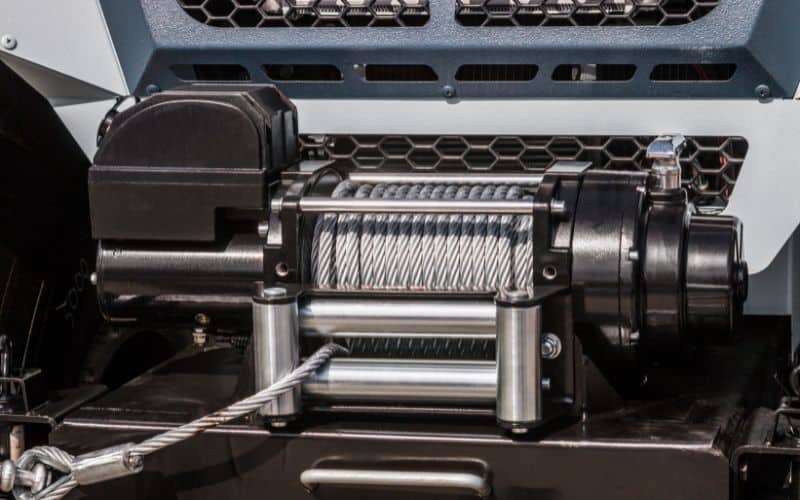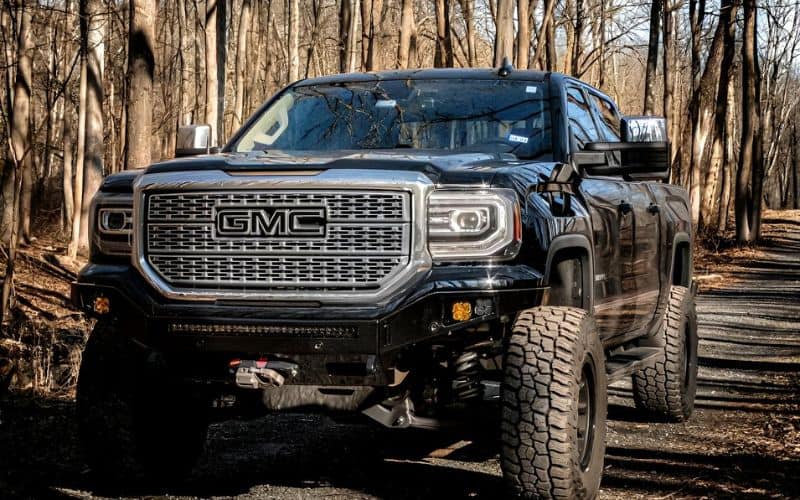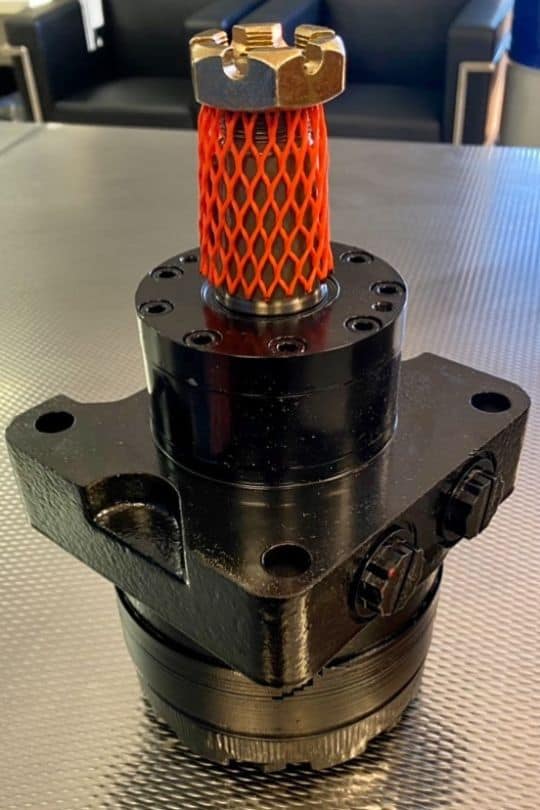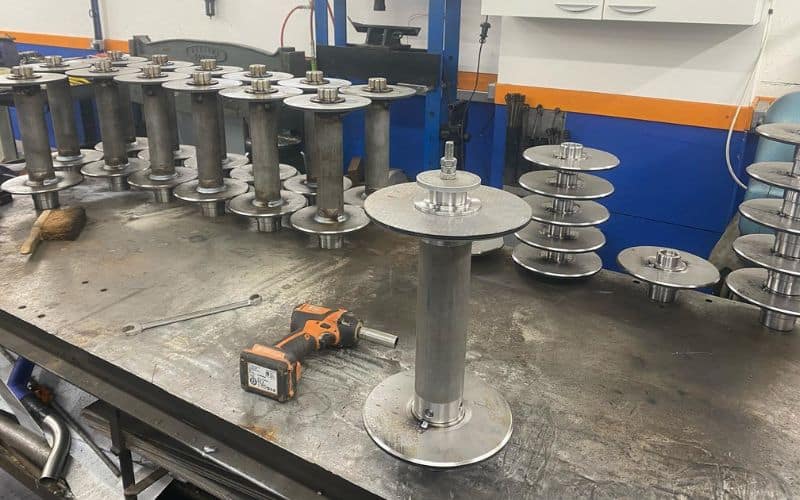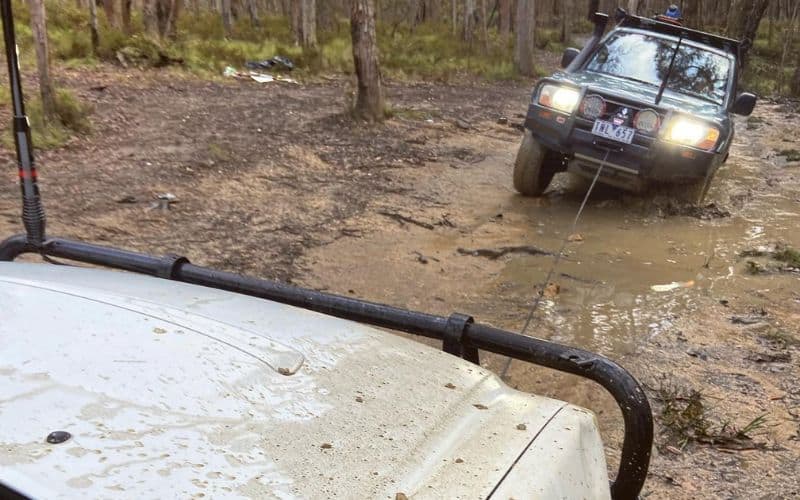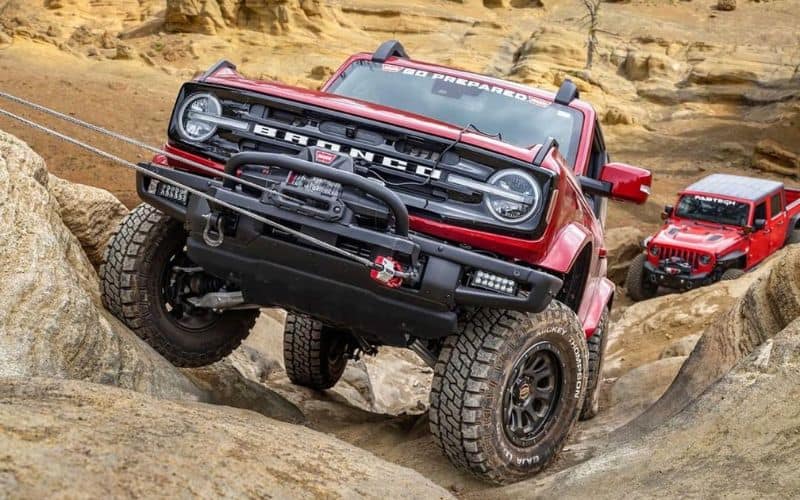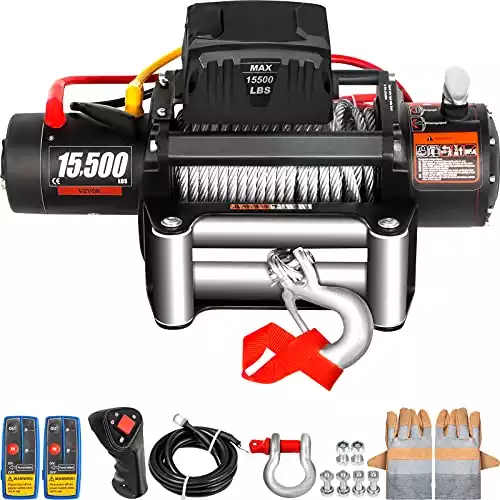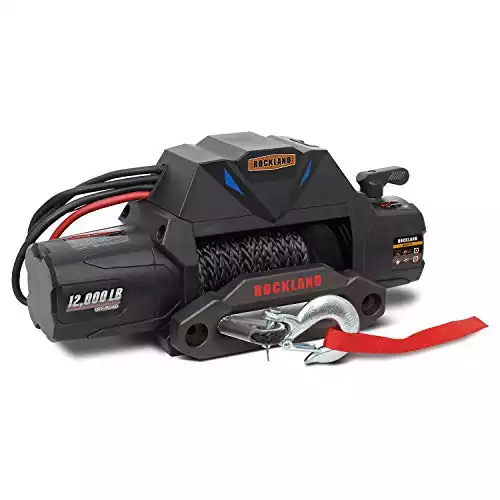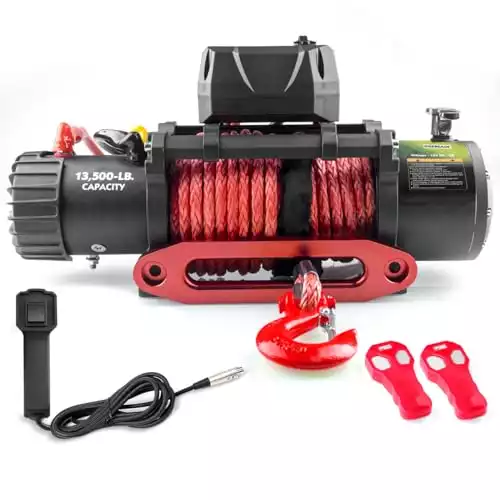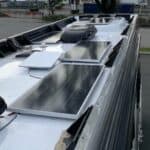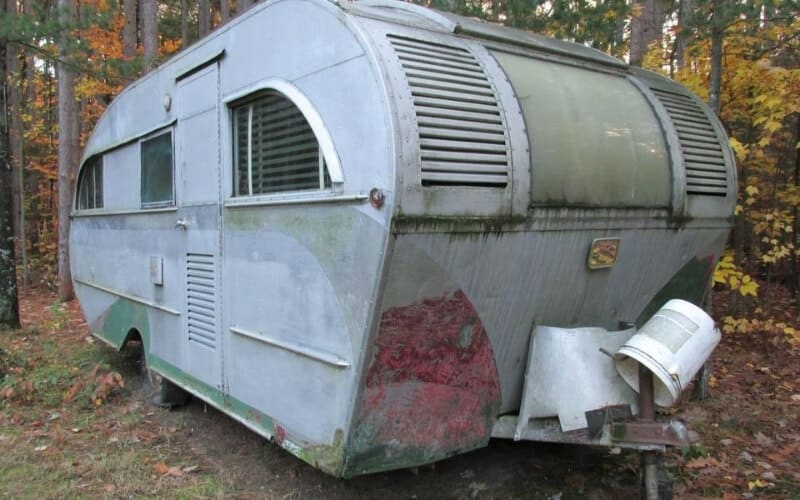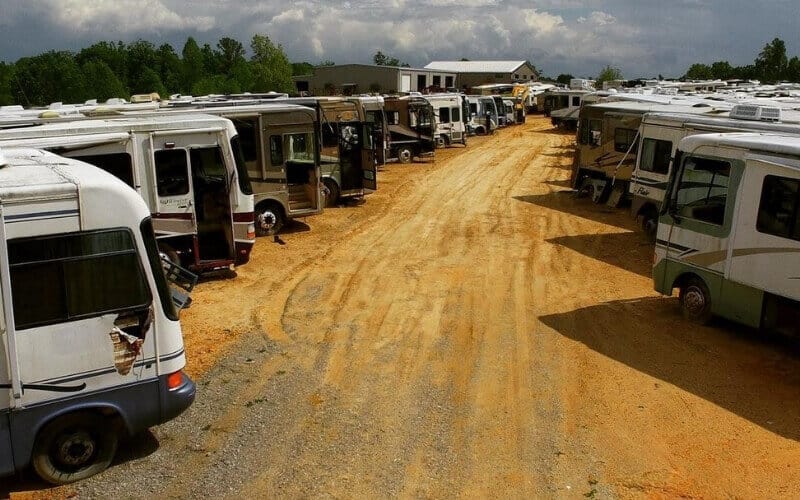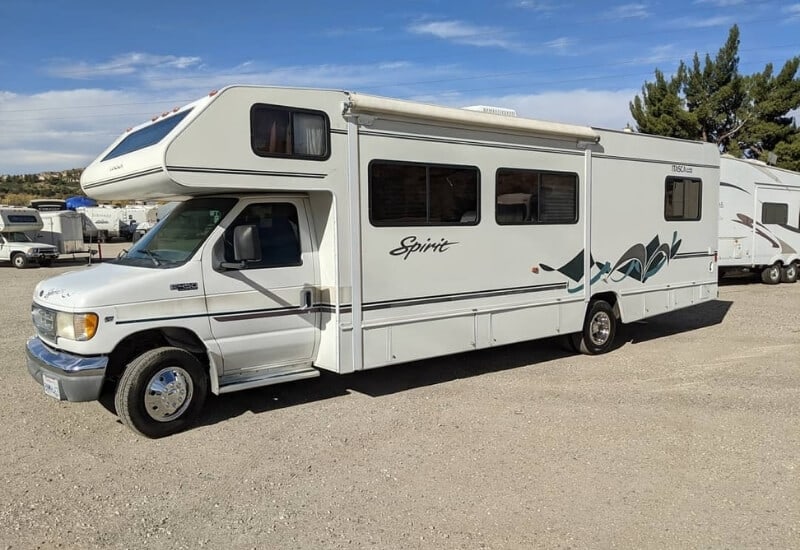There’s an old saying that four-wheel drive can get you through a lot, but when you do get stuck, you’re really stuck badly! Of course, for off-roaders and overland camping enthusiasts, it also means you are probably stuck so far from the civilized world that no one else can possibly come to save you.
In a time like this, the best tool for self-rescue is to have a tow winch installed and ready to go. Though if you’re somewhat new to this niche, you might be wondering what a tow winch is and how does it work?
On the face of it, a tow winch has a powerful electric motor that drives a retractable heavy-duty cable. It’s permanently affixed to the structural frame of a truck, Jeep, or similar off-road vehicle. When you’re stuck beyond belief, you can extend the cable out to hook onto a large tree or other confident anchor points to help pull yourself out.
Though this is a simplistic explanation for what is a somewhat complicated device. The length and type of cable, the type of electric motor, and the specifications of the vehicle are all important factors that will come into play when finding the best tow winch for your off-road rig. Obviously, we’re going to need to dig a little deeper into this somewhat technical subject.
How Does A Tow Winch Work?
A tow winch has a heavy-duty cable, or a strong synthetic rope spooled neatly onto a drum. When you need to move something heavy, pull your vehicle out of a tough spot, or help another vehicle get unstuck, you release the brake on the tow winch’s drum. This allows the cable to be spooled out and connected to either a robust anchor point or another vehicle.
At this point, you engage the electric motor that powers the drum, and it gradually tightens the cable. Once the cable is taught, you can use the onboard or wireless controls to increase the electric motor’s torque to either pull your vehicle toward the anchor point or pull another vehicle or object toward you.
What Vehicles Can a Tow Winch Be Installed On?
Four-wheel drive and all-wheel drive vehicles, such as pickup trucks and SUVs with 4×4 capabilities are the most common choice for mounting a tow winch. These are often off-road capable vehicles, where the ability to apply torque and make use of traction on all four wheels helps optimize the tow winch’s ability to get the vehicle out of a tough spot. It also helps improve overall stability.
It also helps that these four-wheel-drive vehicles tend to have plenty of power. The engine and the drive train can then be used in tandem with the tow winch when necessary.
Also, powerful engines tend to have larger 12 Volt batteries to properly power the tow winch’s electric motor. Though many off-roaders will also add an auxiliary power source, but a direct connection is better.
Flatbed trailer trucks are also popular options for a tow winch. This is often for pulling a broken-down car onto the bed to transport it when its wheels aren’t functional.
You can even find tow winches on ATVs and UTVs. These are typically meant to pull the ATV out of a muddy spot, get extra game from a tough location, or move an obstacle like a downed tree branch. The lower gross weight of an ATV prevents it from functionally being able to pull a full-size vehicle or travel trailer.
Components of a Tow Winch And What Do They Do?
There are several key components of a tow winch that all work together to help pull you and your vehicle out of a sticky jam. Gleaning a basic understanding of them will help you ask more informed questions when finding the right tow winch for your rig. It will also help you know the lingo when you’re chatting with experienced overlanders and off-road campers.
1. The Winch Motor
Most off-roading tow winches use electric motors that are wired to the on-board 12 Volt electrical system. The motor then turns the drum which holds the tow cable. The higher the voltage
2. The Winch Cable
The winch cable is attached to the drum. It feeds through a roller fairlead or a Hawse Fairlead in the front section of the winch. Most winch cables are 40 to 100 feet long, which is usually a great enough distance to find a secure anchor point or develop a network of ground anchors capable of pulling a stuck vehicle out of a difficult situation.
Traditionally winch cables were made from a special type of braided metal strands. Though in recent years, polymer synthetic ropes are taking over as the new norm in winch cables.
They are often mandatory in off-road competitions. If you want to compete with your off-road rig, you should prioritize a tow winch with a long synthetic rope cable of at least 65 feet or more.
3. The Tow Winch Drum
The drum of a tow winch is where the heavy-duty tow cable is neatly wrapped. As it rotates in a circular motion, it winds the cable in our out. It holds the spool firmly without you having to worry about it being a problem until you need to use it.
The winch drum also has an internal braking mechanism that’s used to hold the load when the winch isn’t in use. It also prevents the load from slipping back ensuring that the cable doesn’t suddenly spring free from the winch drum when traveling.
4. The Tow Winch Gear Train
Sometimes referred to as the “Winch Drivetrain,” the tow winch gear train takes power generated by the winch motor and converts it into pulling power that you can use to manipulate the vehicle. With a tow-wing gear train, the gear ratio plays a major factor in the line speed.
There are also three main gearing systems to consider. The planetary gear, worm gear, and spur gear. Each of which has a different efficiency transfer. Of these, the planetary gear head and the motor are usually longer and narrower than spur gear motors. Depending on where you want to mount your tow winch, this can be a factor.
How Much Can A Tow Winch Pull?
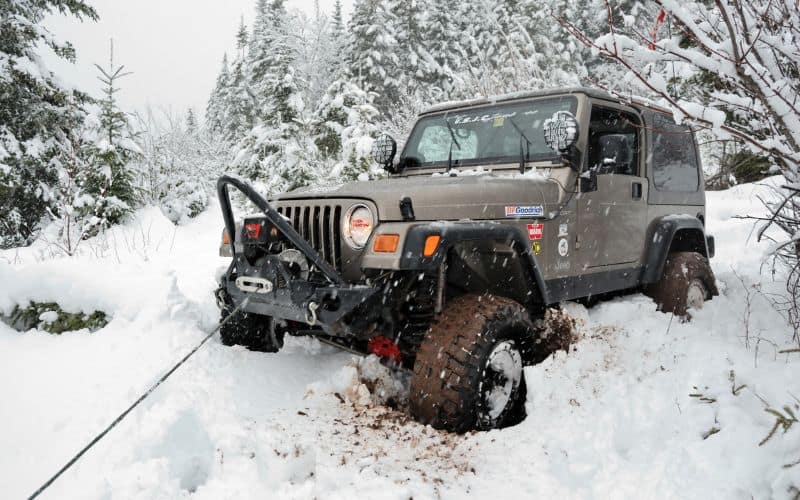
The maximum pulling capacity of a winch is factored into the slope it needs to pull the vehicle up. This assumes that the vehicle itself is supporting its own weight on all four tires and that the tires of the vehicle are capable of some degree of motion. This is known as a “Rolling Load.”
You can use the following table to estimate a winch’s capacity to pull a rolling load.
Winch Rated Capacity | 10 Degree Slope | 20 Degree Slope | 40 Degree Slope |
1,000 lbs. | 5025 | 3401 | 2155 |
2,500 lbs. | 12,563 | 8,503 | 2155 |
5,000 lbs. | 25,136 | 17,009 | 10,776 |
For a non-rolling load, such as a vehicle with wheels trapped by thick mud or rock, or one where a mechanical failure has rendered one or more wheels inoperable, the winch’s real-world pulling capacity is hindered.
In a scenario like this, the general rule of thumb is that you need a winch that is rated with a maximum pulling capacity of 150% more than the real-world gross weight of the vehicle it is pulling.
4 Reasons Why a Tow Winch Is Necessary for Off-Roading
Tow winches are absolutely necessary for any off-road camping or Overlanding vehicle. When you do get stuck, and you will, the tow winch can pull you out. It’s especially handy if you’re going to be the only vehicle going off-road, as it will save your family from getting stuck in potentially savage conditions.
1: Helping Other Off-Road Travelers
You can also use a tow winch to help save other members of your party if they get stuck. A lot of times, putting a tow winch on a vehicle with a locking rear differential ends up being the best friend for a vehicle with a limited-slip differential.
Especially if you have a friend who wants to join you in their SUV for a fun weekend, and they get stuck in the mud, or they slip into a ditch.
2: Adjusting Your Trailer
If you’re off-road camping, a tow winch can also help you set up or reposition your trailer. Let’s say you found a spot that looked great at the moment, but it later proved impossible to level your trailer properly.
Hitching back up can be a struggle because the tongue is now out of alignment with the hitch of the truck or jeep. In a time like this, you can use the tow winch to adjust the trailer’s position or at least move it to a better location to hitch back up again.
A tow winch can also be used to pull your trailer out of a jam. More than one off-road camping enthusiast has set up on gravel or what looked like firm soil, only to have a rainstorm turn things soft, leaving the jack stands sunk in the mud.
In a time like this, a tow winch can be used to either pull the trailer to firm ground again or at least position it better to hitch up and drag it out with your tow vehicle.
3: Access To Remote Locations
With all due respect to the National Park Service and the State Park systems of all 50 States, there are areas of public land where “Technically,” you’re allowed to be there and camp there.
Yet they know very well that no one is ever going to be able to get there in a vehicle. These spots are reserved for hike-in campers who will walk grueling miles down closed logging roads and paths to stay at a pristine campsite.
When you have a tow winch on your four-wheel drive vehicle, you can get down these closed logging roads and treacherous trails in comfort and style. If you do happen to get stuck in a muddy stretch or a washed-out section of road, your tow winch can pull you free with confidence.
4: Saving Money on Tow Trucks
A tow winch can also come in handy at home. Especially if you live in a northern-tier state where ice storms are a common winter problem. An accidental slide on an icy road can leave you stranded for hours waiting for a tow truck.
Only to then be stuck with a massive bill for your troubles. Yet a tow winch might be able to pull you out of a jam like this, which can be a lifesaver in the middle of a severe storm.
What Size Tow Winch Do I Need?
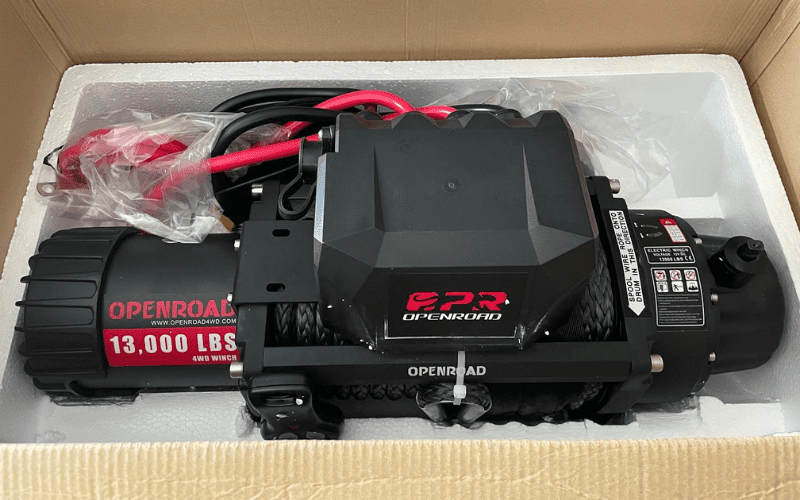
The prevailing wisdom here is that you should target a tow winch with a weight rating of 150% more than your truck’s gross vehicle weight (GVW). You want a tow winch that is capable of pulling more than just the dry weight of your vehicle. It needs to be able to handle the fully loaded maximum gross weight and then some.
Though this is a winch that would pull a truck that is dead weight up a severe slope of more than 35 degrees. You would usually only find a scenario like this in an extreme overlanding expedition or an off-road competition.
If you just need a tow winch to help pull your SUV out of the mud or help your friend out of a shallow snowy ditch, then the winch only needs to have a rated pulling capacity of 30 to 50% of the real-world gross vehicle weight.
The Best Entry-Level Tow Winches for Your Vehicle
The good news is that the increasing popularity of overlanding and off-road camping means that there are more entry-level tow winches out there than ever before.
They have the maximum pulling capacity to handle a lot of modern-day vehicles that need to traverse tough terrain while also being easy to install and intuitive to use in the field.
1: VEVOR 15500lb Load Capacity Truck Power Winch
This Vevor electric tow winch is set up to run off your vehicle’s onboard 12 Volt electric system. It has a 6.6 Horsepower motor that translates into a maximum pulling power of up to 15,500 pounds.
More than enough to pull the gross weight of even a heavily loaded half-ton pickup truck with the power to spare. Though it was originally engineered for Jeeps and other off-road SUVs.
One of the great things about this Vevor electric tow winch is that it comes with a 93-foot-long synthetic steel rope.
Not only does this give you the distance you need to reach just about any hard anchor point like a tree or a rock outcropping, but it also has the structural integrity to not give under the load created by the electric motor.
Even if there isn’t a good anchor point nearby, a steel rope this long is often sufficient for using ground anchors or a snatch block without sacrificing functionality.
2: Rockland VMI14 12 Volt DC Electric Integrated Winch Kit
This Rockland VMI14 12 Volt electric rope has a maximum pulling capacity of up to 12,000 pounds. This will handle the weight of almost any half-ton pickup truck and pretty much any off-road jeep or SUV.
One of the interesting things about the Rockland VMI14 is that it uses an 82-foot synthetic rope. It’s considered to be safer than traditional steel cable. When it does fail, the reaction is far less severe.
To that point, a lot of off-road competitions now require a synthetic rope. So, if you’re a competitor, you might want to move the Rockland VMI14 might be the best tow winch for you!
3: RUGCEL RG-0021 Waterproof Electric Synthetic Rope Winch
The Rugcel electric tow winch is very well engineered with a lot of the modern innovations that competitive off-roaders look for, as well as overlanding campers who want a winch that inspires confidence.
This starts with the 100-foot synthetic nylon-based red winch rope, which has a maximum pulling capacity of up to 13,500 pounds.
It’s powered by a robust 7.2 horsepower electric motor. It also has a Hawse Fairlead that protects and reduces wear on the synthetic winch rope while also protecting the winch itself from unnecessary damage.
It also has a 3-Stage Planetary gear system that enables differential, deceleration, and reversal. There’s even a wireless remote control that lets you get well out of harm’s way!
Is a Tow Winch with a Synthetic Rope Better Than Traditional Steel Cable?
While some die-hard steel cable lovers are out there, many overlanders are switching to tow winches that use synthetic rope. It is far less damaging to the winch itself while also having less catastrophic consequences if the rope fails. To that point, a lot of off-roading competitions have rules that mandate the use of a synthetic rope winch. These sanctioned events won’t allow steel cable winches to enter.
Is It Worth Fitting Winch on Your Truck?
There’s no doubt about it; tow winches open up your opportunities to safely enjoy off-roading camping sites and off-road events. They’re a must-have item for overlanding and can even come in handy on your daily driver Jeep, SUV, or truck.
Increased popularity and engineering innovations have helped them evolve to the next level of performance while also helping to bring the initial purchase price down.
If you’re looking for a hard-pulling heavy-duty model with a traditional steel cable, then the VEVOR Electric 15500 lb winch, might be your best tow winch. Its 6.6 Horsepower electric motor and 93-foot length are enough to get you out of any jam.
If you want a model worthy of competing at off-road events, and can still take care of you confidently when you’re off-road camping, then the Rugcel 13,500 might be the best tow for you. It has all the engineering features you want to see to protect your investment while also using a state-of-the-art red synthetic winch rope.

